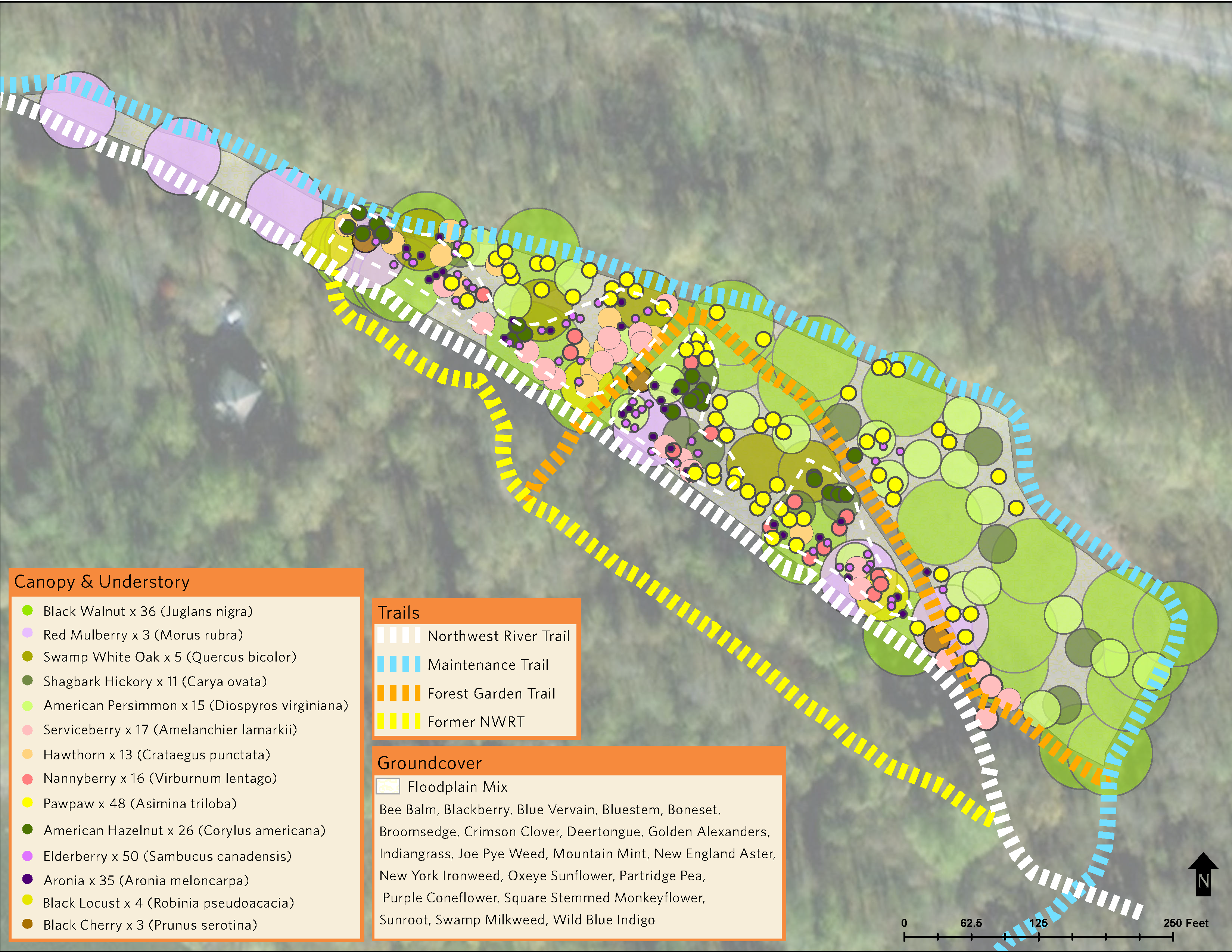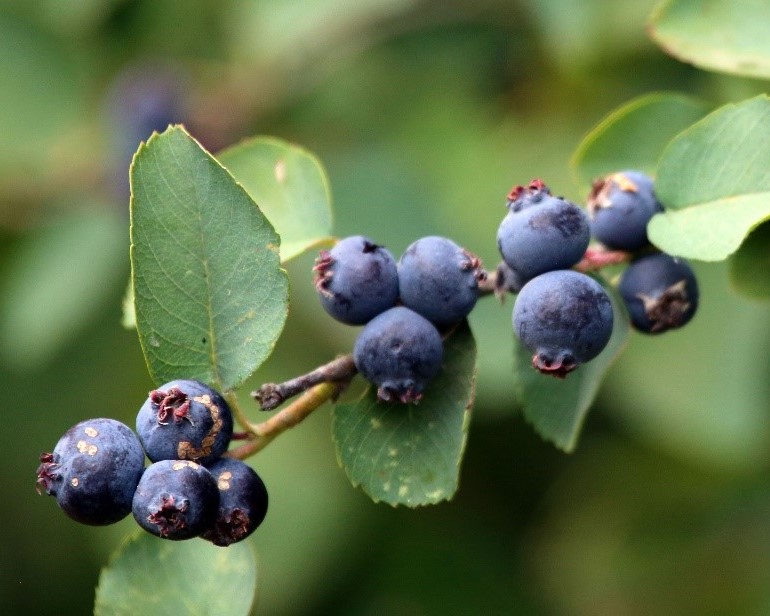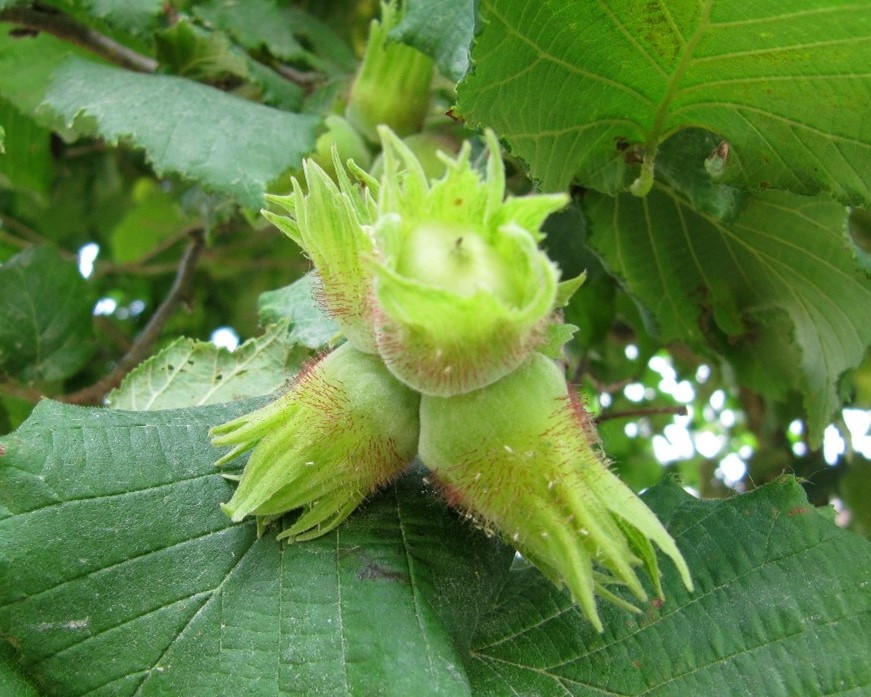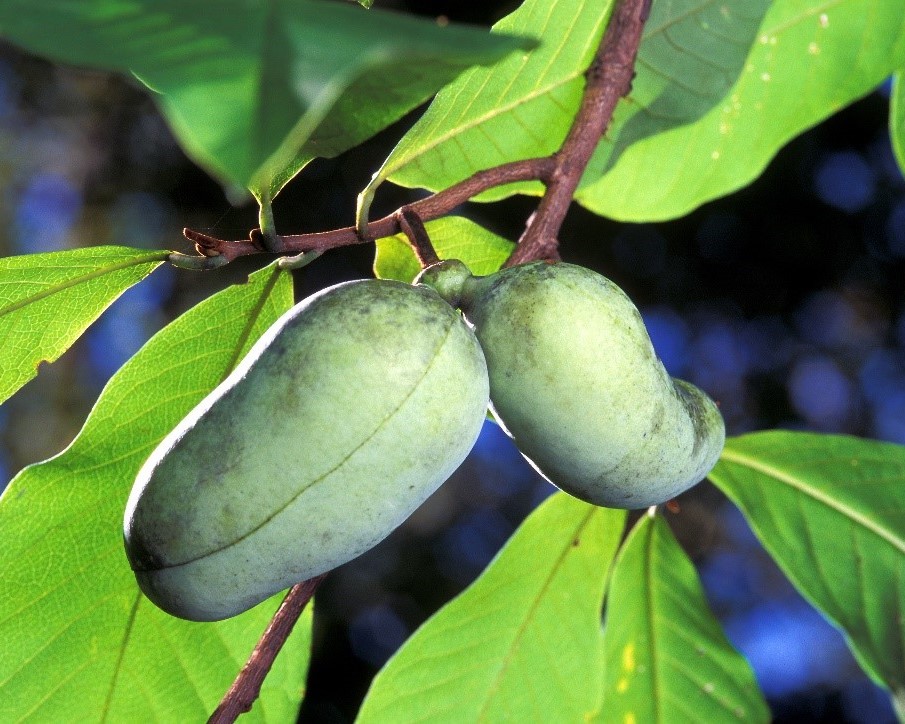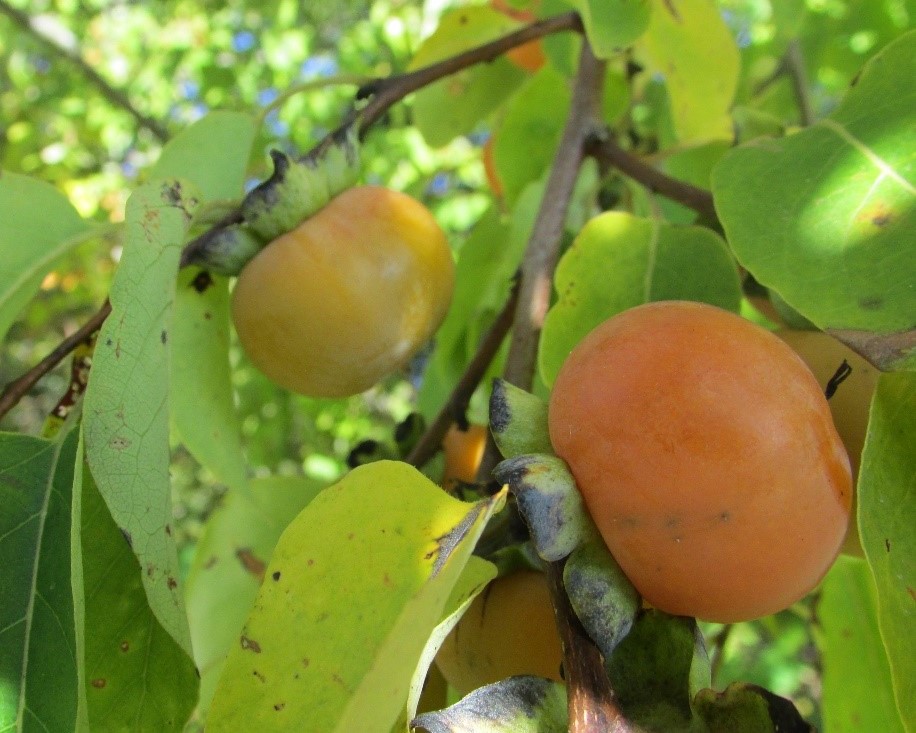Planting and supporting the growth of native species on our nature preserves is a priority for the Lancaster Conservancy. We’re creating pollinator meadows at places like Kellys Run Nature Preserve and Climbers Run Nature Center, and our Stewardship team and volunteers spend countless hours removing invasive plants that would outcompete native species that support our ecosystems. But the Falmouth Forest Garden puts an extra twist on planting native.
Located along the Northwest River Trail in Conoy Wetlands Nature Preserve, the 5-acre Falmouth Forest Garden is a restored floodplain that used to be a fallow farm field. Conservancy staff and volunteers planted native perennial crop-producing species like black walnuts, persimmons, pawpaw, serviceberries, and hazelnuts there that both support wildlife and provide a unique experience for visitors.
The Falmouth Forest Garden is a demonstration of regenerative agroforestry techniques that have been utilized by various groups around the world for centuries or more. There is evidence of Indigenous peoples in the Pacific Northwest creating forest gardens more than 150 years ago, Science reported. And, Science reported, Native communities began domesticating plants in Amazonian forests at least 8,000 years ago, creating “islands of biodiversity.”
Agroforestry, most simply, involves combining farming and trees. The US Department of Agriculture says, “Agroforestry is the intentional integration of trees and shrubs into crop and animal farming systems to create environmental, economic, and social benefits.”
→ Learn about how we use agroforestry at Wizard Ranch Nature Preserve
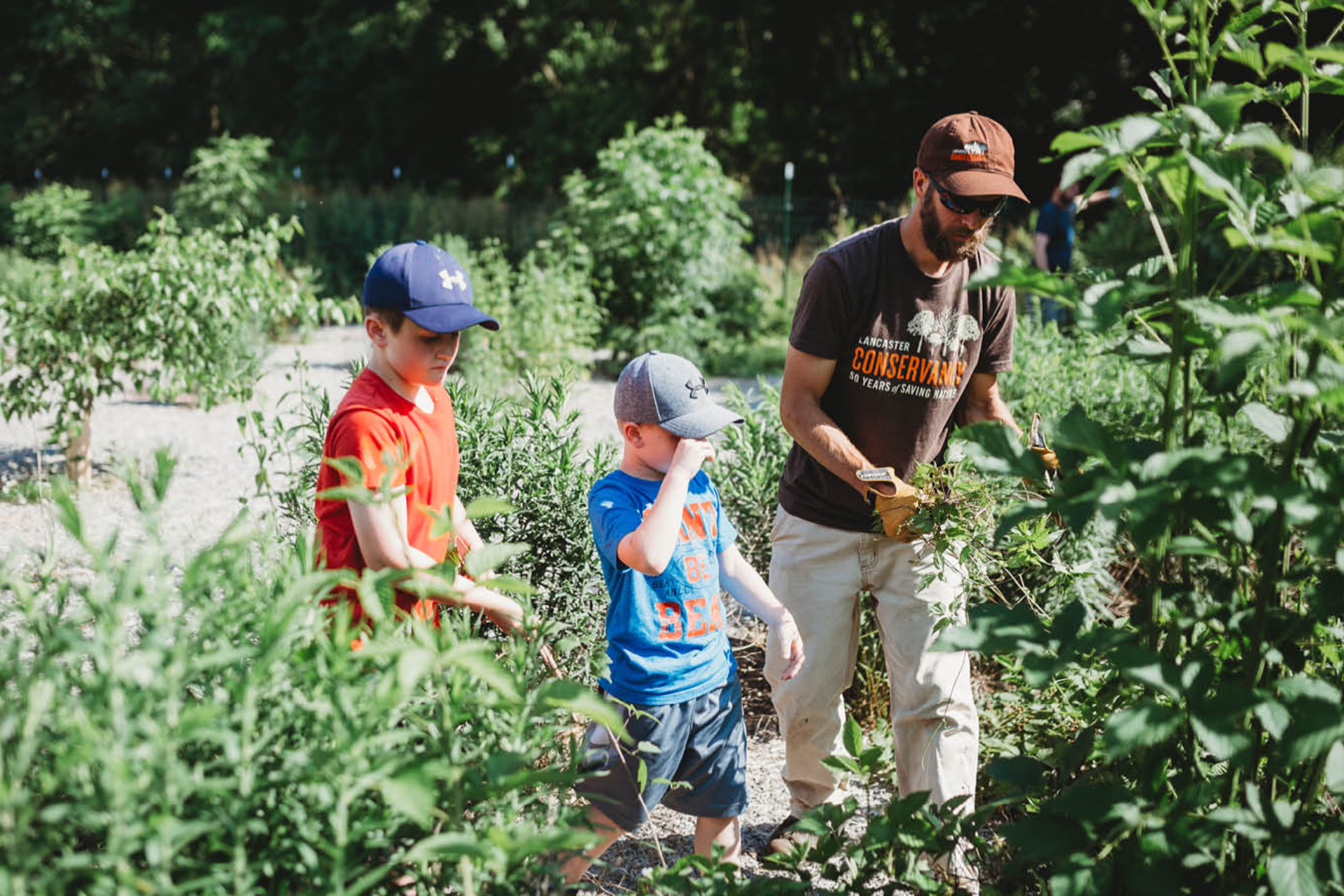
Photo by Michelle Johnsen
Forest gardens are a type of agroforestry system that includes a mix of trees, shrubs, and perennial plants that mimic the structure of a natural forest, explains the Agroforestry Research Trust. They often produce crops like fruits, nuts, spices, or medicinal products. Because they include several different species, they tend to be more resilient and stable than monoculture farming. They also can be self-sustaining when set up carefully. For example, the Agroforestry Research Trust explains, plants with deeper roots can draw minerals up to the topsoil where other plants can access them, or species can be chosen to attract predators of common pests.
The Falmouth Forest Garden has 20 native crop-producing species like black walnut and pawpaw in addition to a supporting groundcover of native herbs and wildflowers. While foraging is discouraged on most of the Conservancy’s nature preserves, it is encouraged in the Falmouth Forest Garden, where there are several species that are edible for people. The Falmouth Forest Garden also benefits native animal species including pollinator insects, bats, and the endangered blackpoll warbler. It’s a paradise for birds and birdwatchers alike!
Learn more about some of the species in the Falmouth Forest Garden:
Allegheny Serviceberry
Amelanchier laevis
Flower/Fruit: Delicate white flowers give way to a purple-blue berry that is slightly larger than a blueberry and tastes like a mix of strawberries, blueberries, and almonds.
Wildlife Value: Many animals are attracted to the serviceberry, including chipmunks, squirrels, mice, voles, foxes, black bears, and over 40 bird species.
Pollinators: Butterflies, bees, and hummingbirds are among some of the pollinators of the serviceberry.
(Photo Credit: Peter Pearsall/U.S. Fish and Wildlife Service)
American hazelnut
Corylus americana
Flower/Fruit: Small round nut with a brown shell
Wildlife Value: Squirrels, foxes, deer, northern bobwhite, ruffed grouse, turkey, woodpeckers, pheasants, and deer all eat hazelnuts. Rabbits, deer, and moose also browse the leaves and twigs.
Pollinators: Moths and butterflies
Pawpaw
Asimina triloba
Flower/Fruit: Large green-yellow fruit shaped like a mango. It tastes like a cross between a mango and a banana.
Wildlife Value: Deer do not browse this plant because it is unpalatable to them. It is eaten by a variety of animals including raccoons, squirrels, and black bears as well as several types of birds.
Pollinators: It is pollinated by flies and some beetles.
Persimmon
Diospyros virginiana
Flower/Fruit: Yellow red in color, persimmons are about 2-3 inches in diameter and can look like tomatoes.
Wildlife Value: Possums, raccoons, deer, rodents, and numerous birds all eat persimmons.
Pollinators: Bees
(Photo Credit: Chris Light, CC Attribution-Share Alike 4.0 International)
Please do your own research before consuming anything in the forest garden. Not all species in the Falmouth Forest Garden are edible for humans.
How to get to the Falmouth Forest Garden:
Park at the Falmouth Boat Launch and hike south on the paved Northwest River Trail for about ¼ mile to reach the forest garden.
